HUSQVARNA’S HISTORY
The name Husqvarna comes from the mill at the waterfall which as early as 1528 was called ‘Husquernen’, the House’s mill. ‘The word ‘house’ is the medieval term for a fortified structure.’ The mill belonged to the defense fortress Rumlaborg.
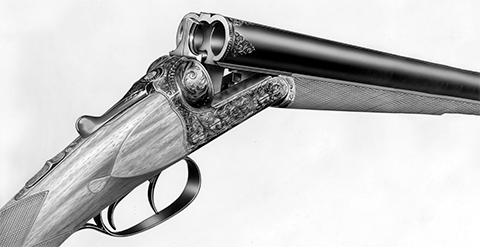 Rifle Factory Era | 1620–1876
Rifle Factory Era | 1620–1876
The tradition of weapon forging in Huskvarna can be traced all the way back to the construction of the fortress Rumlaborg in the 14th century, the fortress whose mill gave its name to the company and the city. In 1620, Jönköping’s Rifle Factory was founded as one of five in the country, by King Gustaf II Adolf and weapon manufacturing was formalized. In 1689, the factory established a drill mill in Huskvarna, which means good efficiency, which is why operations are subsequently gradually moved to Huskvarna. In 1757, the factory was privatized and soon changed its name to Husqvarna Rifle Factory.
When Husqvarna receives new weapon orders in 1867, a joint-stock company named Husqvarna Vapenfabriks Aktiebolag is formed. At the same time, a new and modern workshop (today’s museum building) is built and in 1872, sewing machine manufacturing begins due to decreased weapon production. Two years later, in 1874, a foundry is started. However, business is going badly with sales loss after the first sewing machine and large investments in the construction of the foundry. With the end of the year 1876, orders for weapons from the defense forces also end. Husqvarna faces a difficult situation.
Tham-era | 1877–1945
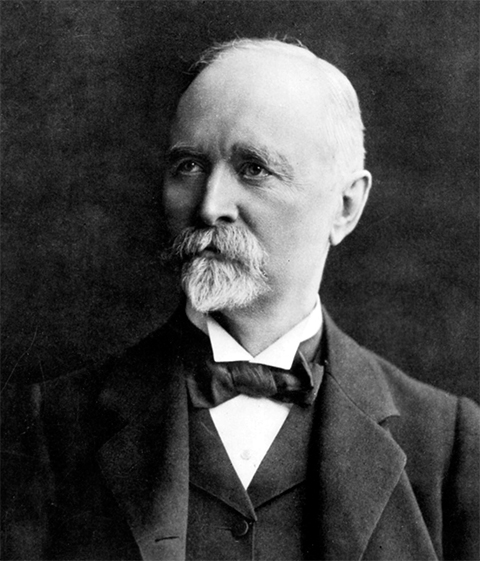 DThen the director is appointed, who will develop the company into a modern large-scale industry. Under the leadership of Wilhelm Tham, production is directed towards the civilian market and over the coming decades many new products see the light of day, such as hunting weapons, stoves, cookers, bicycles, motorcycles and household products. Business is thriving and one of the reasons is that Tham, who is also an ironmaster (owner of an estate), also funds a number of community institutions such as schools, churches and housing which ties the skilled workers to both the company and Huskvarna locality. Moreover it’s a period of transition where urbanisation really takes off. Large crowds leave rural areas for life in cities becoming consumers on a larger scale for first time. Husqvarna naturally assumes role as product supplier for various aspects everyday life.
DThen the director is appointed, who will develop the company into a modern large-scale industry. Under the leadership of Wilhelm Tham, production is directed towards the civilian market and over the coming decades many new products see the light of day, such as hunting weapons, stoves, cookers, bicycles, motorcycles and household products. Business is thriving and one of the reasons is that Tham, who is also an ironmaster (owner of an estate), also funds a number of community institutions such as schools, churches and housing which ties the skilled workers to both the company and Huskvarna locality. Moreover it’s a period of transition where urbanisation really takes off. Large crowds leave rural areas for life in cities becoming consumers on a larger scale for first time. Husqvarna naturally assumes role as product supplier for various aspects everyday life.
NWhen Wilhelm Tham passes away in 1911, he has not only doubled the company’s turnover 35 times, but also been instrumental in making the industrial town a city. In 1912, his son Gustav Tham is appointed CEO together with his cousin Wilhelm Göransson and quite significant for the coming years are the motorcycle production, foundry operations, and military weapon manufacturing during the world wars. From 1877 to 1946, the company’s employees increase from about 180 to about 6,000. Gustaf Tham leaves the CEO position in 1946. At this point, about 4,000 people work at the factory in Huskvarna and a total of 6,000 in the entire group.
Husqvarna during the post-war period | 1946-1977
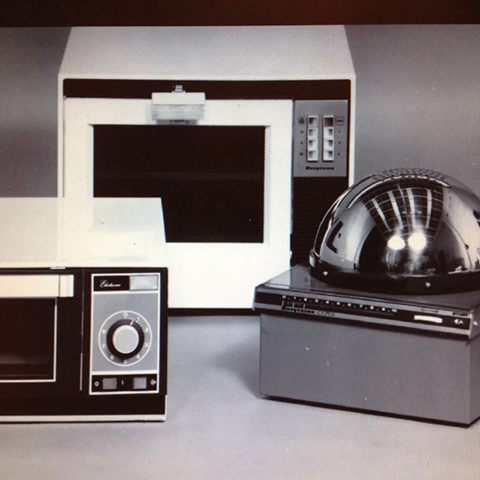 In order to cope with the changes after the Second World War, Husqvarna once again invests heavily in the emerging needs of the civilian market for household items. When Gustav Tham retires, engineer Thure Öberg takes over. He has a background in the subsidiary Norrahammars bruk and good knowledge in many technical areas. During his years, microwave technology is developed among other things. The emergence of the ‘Folkhemmet’ contributes to the construction of new housing, which is to be furnished and the production of stoves, household appliances, washing machines and refrigerators is in full swing. The record years of the 1950s therefore mean an increase in the standard of living for most people and to a wave of consumption of never before seen measure. Thus, a multitude of products for home, household and lifestyles are manufactured at Husqvarna, one model more modern than the other.
In order to cope with the changes after the Second World War, Husqvarna once again invests heavily in the emerging needs of the civilian market for household items. When Gustav Tham retires, engineer Thure Öberg takes over. He has a background in the subsidiary Norrahammars bruk and good knowledge in many technical areas. During his years, microwave technology is developed among other things. The emergence of the ‘Folkhemmet’ contributes to the construction of new housing, which is to be furnished and the production of stoves, household appliances, washing machines and refrigerators is in full swing. The record years of the 1950s therefore mean an increase in the standard of living for most people and to a wave of consumption of never before seen measure. Thus, a multitude of products for home, household and lifestyles are manufactured at Husqvarna, one model more modern than the other.
During the 1960s, organizational changes occur in the company and some products disappear; most symbolically is the weapons manufacturing that is sold to Förenade Fabriksverken, the Swedish state’s own weapons manufacturer. The large iron foundry is shut down in 1971, although iron casting continues on a smaller scale for certain sewing machine models. The company changes its name to Husqvarna AB and a new logo is introduced in 1973.
Husqvarna and Electrolux | 1978-2005
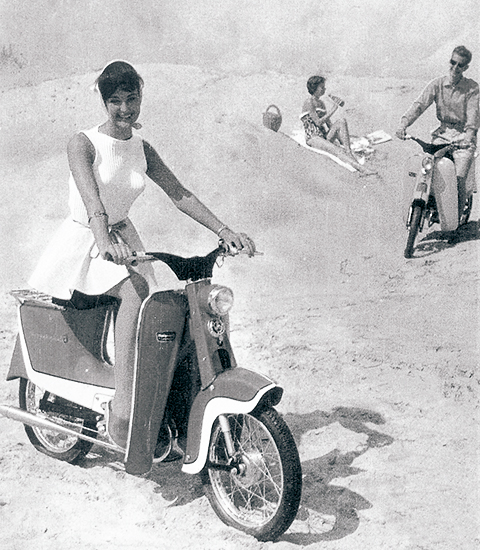 Towards the later part of the 1970s, very strong winds of change blow and in 1977 Electrolux buys Husqvarna. The company then becomes a subsidiary in the Electrolux Group, which over the coming years essentially refines Husqvarna to become a forestry and gardening company. This results in a major turnaround in the product range and among other things, they sell the motorcycle manufacturing to Italy after just under ten years.
Towards the later part of the 1970s, very strong winds of change blow and in 1977 Electrolux buys Husqvarna. The company then becomes a subsidiary in the Electrolux Group, which over the coming years essentially refines Husqvarna to become a forestry and gardening company. This results in a major turnaround in the product range and among other things, they sell the motorcycle manufacturing to Italy after just under ten years.
In 1989, the last shotgun was made and eventually the sewing machines also disappeared from the company. They also acquired Partner, Jonsereds and a number of American and Canadian forestry and garden companies. In 1999, the European part of the American company McCulloch was purchased, which among other things manufactures lighter chainsaws and trimmers.
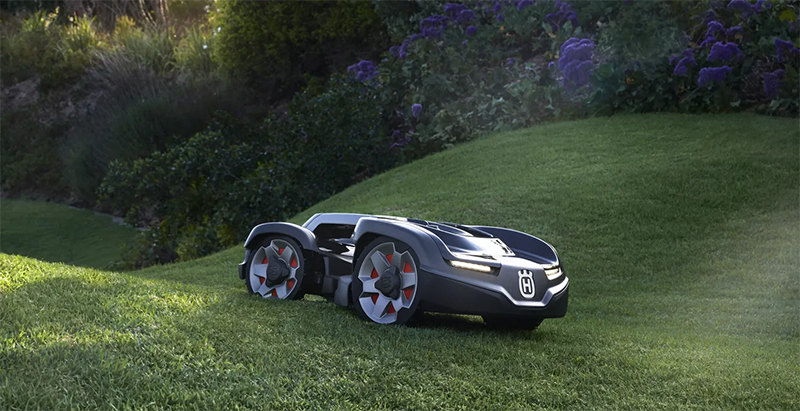
A reborn Husqvarna | 2006-
In 2006, Electrolux spins off Husqvarna, which again becomes its own company. The company continues on the path taken with the forestry and gardening industries as its main target groups. In January 2012, the Husqvarna Group changes its name to Husqvarna Group, but the legal name remains Husqvarna AB.
Today, the Husqvarna Group is the world’s largest manufacturer of outdoor products such as robotic lawn mowers, garden tractors, chainsaws, and trimmers. The Group is also a leader in Europe in terms of irrigation products and is one of the leading companies on the world market in cutting equipment and diamond tools for the construction and stone industries. The Group’s products and solutions are sold through specialty and retail dealers in more than 100 countries. The product range includes both consumer products and products for professional users.

